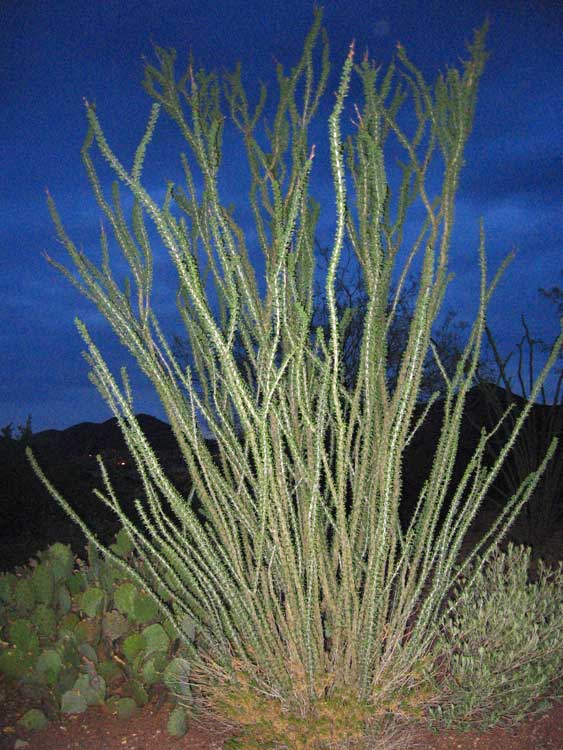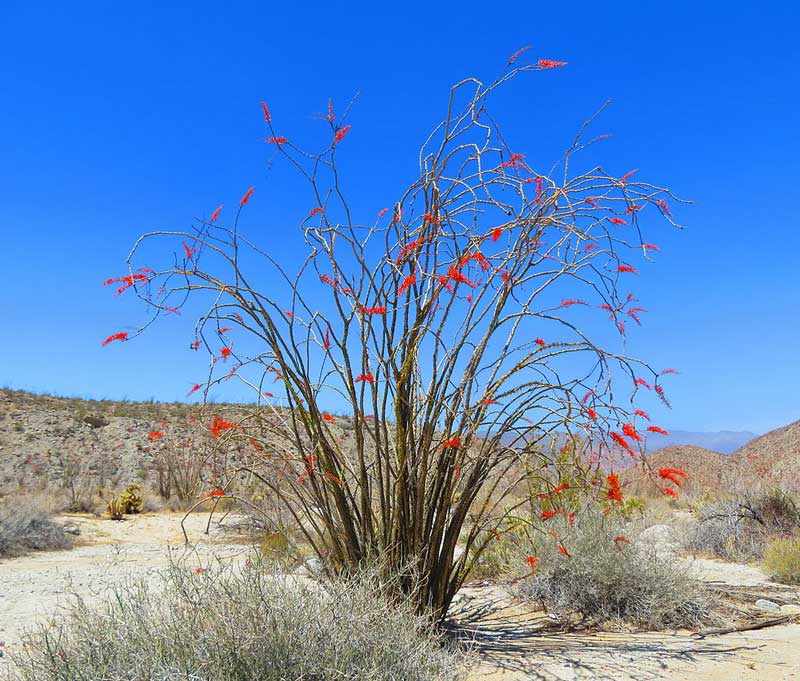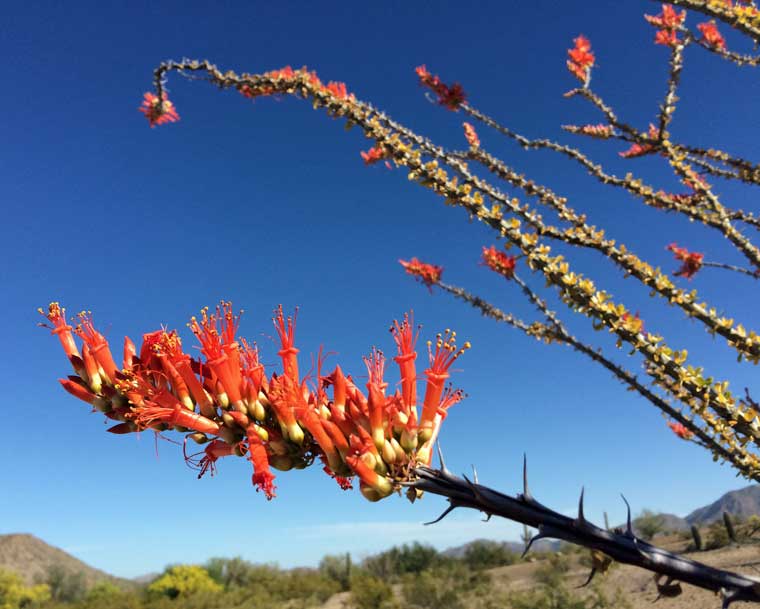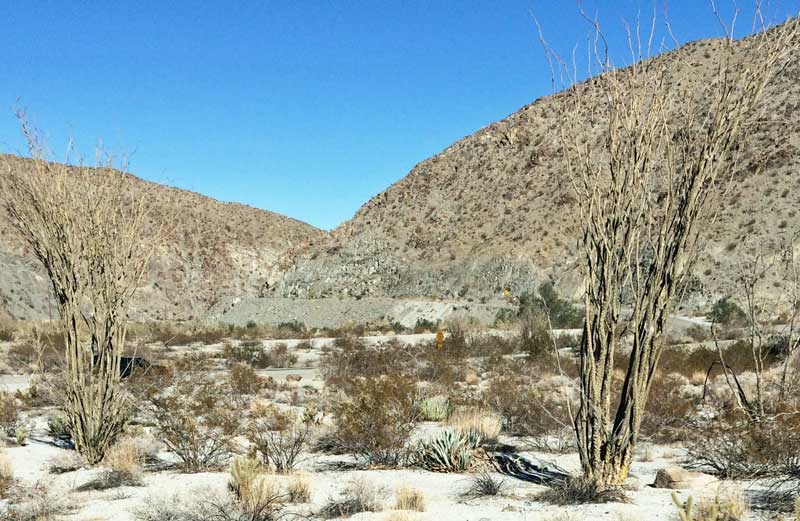Ethnobotany of southern California native plants:
Ocotillo (Fourquieria splendens)

Ocotillo at night after a spring rain.

credit:DiverDave, CC BY-SA 3.0, via Wikimedia Commons
Ocotillo in full bloom at Anza Borrgego State Park

Most Native groups collected the brilliant-red ocotillo blossoms in the spring. The flowers were mixed with water to create a refreshing drink.
Ocotillo (Fourquieria splendens)
Ocotillo, also known as slimwood or desert coral, is an odd shaped plant that is common throughout the American southwest.
During the dry season this plant looks much like a dried, brown bundle of sticks. If you didn’t know any better, you might think the plant was dead. But after a spring rain, small ovate leaves appear up and down the length of its long, spindly branches.
Sometimes, beautiful clusters of red flowers blossom from the tops of the branches. These flowers are then pollinated by hummingbirds and carpenter bees.
The Apache used ocotillo to relieve fatigue and reduce swelling. They ground the ocotillo roots down into a powder, then mixed the powder with warm water to create a bath for soaking an injured body part. Early Spanish explorers tell stories of how Apaches would ease their horse-riding injuries with ocotillo root powder treatments.
Ocotillo flowers
The showy, red flowers provided food for local Native Americans. The Cahuilla of the Mojave Desert ate them raw. They also soaked them in water to make a refreshing, summer drink. Apparently, these flowers have a crisp, tangy flavor.
The Tohono O’odham people collected the nectar that emanated from the flowers. They then hardened the nectar in the sun like rock candy. This crystallized nectar was eaten as a sweet treat.
Ocotillo seeds
The Cahuilla also collected seeds from the flowers and dried them in the sun. Once parched, the seeds were ground into flour for mush.
Ocotillo construction
The Cahuilla also took advantage of the long, slender ocotillo branches. These stalks were used as fencing material around planted crops. The hope was that this ocotillo fence would keep mice and rats out of their garden.
Tohono O’odham people used ocotillo branches for warping material on their shelters. The thin, pliable branches could be wrapped around the sides of their huts. Thatch material was then laid on top of the ocotillo branches.
The Tohono O’odham also used the sharp, rigid thorns of ocotillo branches to pierce skin during initiation rites.

Ocotillo on a valley floor near the Salton Sea.
Looking for a book that will connect you with the wild elements of this planet?
Here’s my recommended reading list.
Warning: All of my books contain a botany, ethnobotany or drug discovery component.
References:
Castetter, Edward F. and Ruth M. Underhill 1935 Ethnobiological Studies in the American Southwest II. The Ethnobiology of the Papago Indians. University of New Mexico Bulletin 4(3):1-84 (p. 28)
Romero, John Bruno 1954 The Botanical Lore of the California Indians. New York. Vantage Press, Inc. (p. 28)
Please return to our main Ethnobotany of southern California page.
On our main ethnobotany page, we present a clickable list of the southern California native plants that became a part of the culture of Native Americans and early European settlers. These plants were used for medicine, food, shelter, drink, tools and art.
Warning: The information about plants on this website is intended for general educational purposes only. The author of this website accepts no responsibility for problems arising from the user’s misidentification, misuse, or use of plants. Please read the full TERMS associated with this website.
